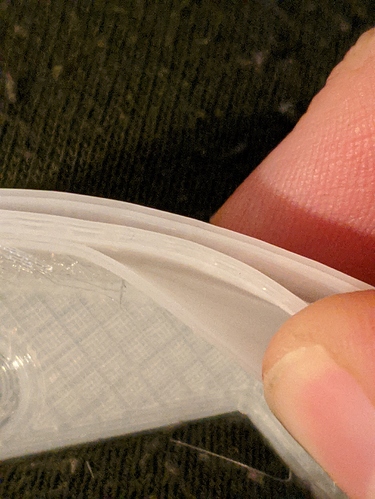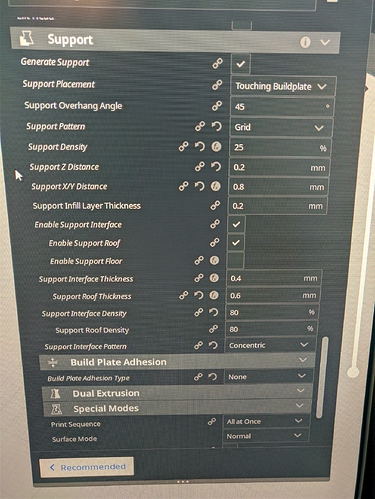Watch this. That helped me alot.
One thing i can’t get quite right is sticking layers with TPU.
or rather walls sticking to the infill
What is your line width @xsynatic? TPU doesn’t like wide extrusions… I use 0.38 with a .4mm nozzle. Many slicers use 0.48 and TPU is unable to expand and bond well to adjoining walls.
Increase flow% for TPU profile specifically. TPU is stretchy so when the filament is pulled in, lesser quantity is pulled in, compared to PLA, because the filament is stretched. You know how a rubber band gets thin when you tug on it.
Already increased by 20%. (Thats the result you saw above)
Higher extrusion multiplier and higher temp
I dont use cura so im not really familiar with all those settings. I put the extrusion multiplier at 1.25, printing temp 235 and most important print very slow, like 20mm/sec
maybe I am going blind but I didn’t see the flow%. You can just type flow to select the flow options. I would say set the flow to 101% and see if the walls stick, if not 101 then 101.5% and so on.
Also I don’t understand what you meant by this.
Where? Maybe I missed it in the settings?
it was hidden, whoops.
This is what i mean on the printer itself
So cura set it to 100% but i changed it to 120% while the printer was preparing for the print.
120% is crazy which means your esteps are not calibrated well. I would suggest calibrate that first with PLA and then slightly increase the flow% for TPU.
I would suggest to make changes in the profile settings, not printer.
Agreed, 40mm/s is too fast for TPU.
Thats another thing. The 40mm/s is not what the printer uses. When i start printing tpu i go down to 60-70% of the values given in cura. For PLA i leave it at 100%
@mishrasubhransu 120% is just for tpu. Pla prints perfectly with 100%
Okay, but instead of changing speed and flow% in the printer, I would suggest to use the profile in cura. You know you can create and save different profile for different materials. I even have different profile for different filaments from different brands.
I had a similar issue with nylon. The way I fixed it was to set the nozzle size in the slicer software smaller than the actual nozzle size, that way it will force the vertical shells to be closer together. I used 0.35mm setting for a 0.4mm nozzle.
There’s also a setting in slic3r for infill-to-perimeter overlap. You can try increasing that if your infill isn’t sticking to the perimeters.
My “tip” for that was to only use 1wall
Look I made a thing 
Really just happy octolapse plugin for octoprint works so well.
Where do you set that? i use a.4 nozzle but the next lower number is .3mm nozzle. Is that sufficient or too much?
Edit :Kinda got it? I need to create a custom FFF printer to change the nozzle to whatever i want. Stock ender 3 printer won’t let you do this
Edit : Nope, i can set a custom nozzle size but only while editing the printer itself. Also i have to export and import every single profile for the new printer. F* that.
As a rule you typically don’t override the nozzle size, but rather set the extrusion width instead.
I leave the nozzle size at .4mm, but change the extrusion/line width. This forces each line a bit closer together. I primarily use Simpify3D - can any Cura users chime in on the equivalent setting? I can take a look this evening as well.
Exactly, changing nozzle dia is a hack in my opinion. There are so many other parameter to control to give you a desired result.







